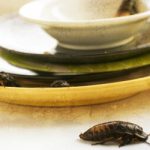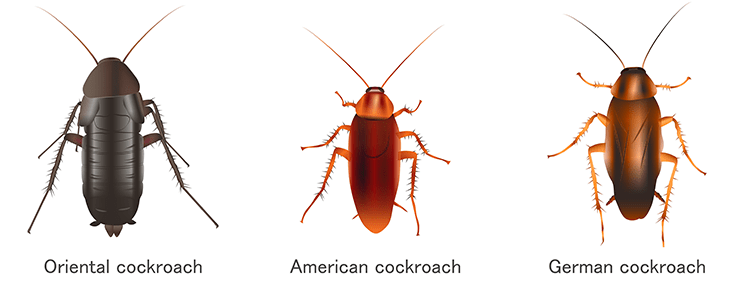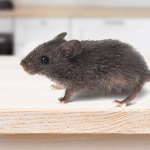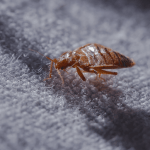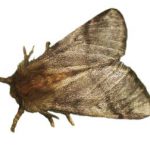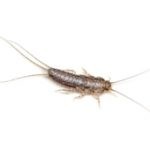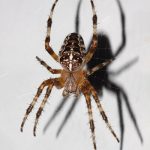Bugs That Look Like Roaches But Aren’t
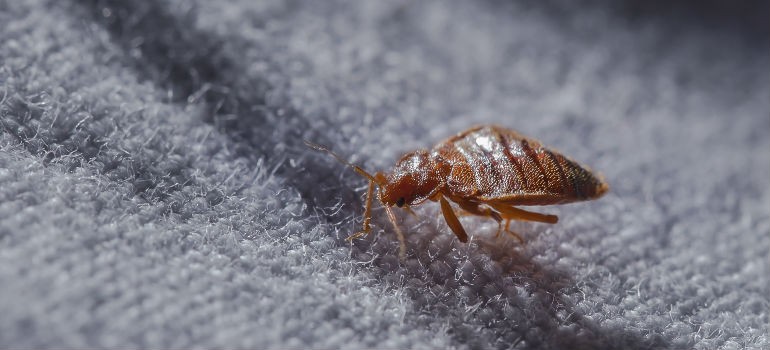
Rarely the cause for positive feelings, cockroaches are among the most primitive insects still in existence. Thanks to their extreme durability, they can survive in both extreme cold and scorching heat with little to no discomfort. There are close to five thousand cockroach species but only five are known to humans as pests.
Cockroach Identification
Cockroach or beetle – sometimes it is hard to tell. That is why, to take the needed actions against a possible pest infestation, it is best if you know what cockroaches look like and if that is indeed what you are dealing with. There are several attributes to help you distinguish the most common cockroaches:
- Appearance
Although they can vary tremendously in appearance, there are some general similarities between all cockroach species. A cockroach is usually the size of a thumb but can reach up to 9cm in length and as much as 30 grams in weight. They usually have a small head and flat body, often brown, dark brown, or black in colour. Their body’s shell is an exoskeleton and is often coated with water-repelling wax. They have two sets of wings and three sets of legs.
- Behaviour
Cockroaches are social beings that often group together and give parental care. It is found they produce pheromones to help each other identify the exact population type and the gathering place. They are nocturnal and usually run away if a light is pointed towards them. Cockroaches often make a hissing or a chirping sound. They are omnivorous and, when mating, the male often courts the female.
- Habitat
Different cockroach types have adapted to survive in different extreme surroundings. Some types can survive in the Arctic in temperatures below zero, and some cockroaches prefer to live in or near an aquatic source. Some species can spend long periods of time without any water. Many cockroaches prefer to live in fallen leaf piles, in rotting wood, under tree bark, and generally among the debris.
Read more: Where do Cockroaches Live?
- Bites
There are several cockroach species that feed on human and pet food, but it is unlikely for them to feed on human flesh. Rare cases of a cockroach bite are usually caused by a large population that has outgrown their food resource. The bites are not dangerous but may trigger asthma and allergies.
Among the several types of insects that look like roaches, but aren’t, are ground beetles, crickets, bed bugs, termites, and the wood-boring beetle.
Need a professional pest extermination?
Book local pest control company and a specialist will take care!
Ground Beetles
Ground beetles are part of a large family of beetles. They are rarely found inside people’s homes and are generally not harmful to humans. People collect different types of beetles for personal collections or to study them. Some types of ground beetle are even used for biological control of other harmful or excessive in numbers species.
- Appearance
Ground beetles are shiny, black, metallic or even luminous green in colour with distinguishable dots or ridges on their wing shells. They feed on seeds and insects and spend most of their time on the ground.
- Behaviour
If ground beetles invade your home, they may be mistaken for cockroaches due to their dark shell covers and rapid movements in the dark. Unlike cockroaches, though, ground beetles usually gather around light sources or well-lit windows.
- Habitat
Like cockroaches, ground beetles can often be found near logs or under the bark of a tree. In addition to that, they also enjoy the sand near ponds and rivers.
Crickets
Crickets are versatile and well-known insects. They are often a character in a book, can be kept as pets, and, in some parts of the world, are used for cricket fights by humans.
- Appearance
Crickets are easily recognised by their long antennae. They have round heads, cylindrical bodies, and two sets of wings, which often are the cause of their distinct cricket chirping sound. Only a few of the species are flightless. They are small, have three eyes and three sets of legs – two sets for walking and one set for long jumps. Crickets are usually black, brown, and a few species are light green.
- Behaviour
Male crickets usually produce loud chirping sounds when they are courting a female. Crickets are nocturnal and often create their own holes in rotting wood for shelter. What we perceive as cricket chirping is usually one of several songs – to attract females, a triumphant song, or an aggressive song.
- Habitat
Often found in the grass, bushes, and sometimes in the tree canopy, crickets live in almost all regions, except the cold ones. Almost 100 cricket species can be found in the same region in some tropical locations.
Bed Bugs
Sleep tight and don’t let the bed bugs bite is a nursing rhyme for a reason. A bed bug infestation is often very hard to deal with and the bites can cause some issues to humans.
- Appearance
Bed bugs are light to reddish-brown in colour, small, flat, and oval insects. Growing up to 5mm (0.20 in) in length, they can sometimes be hard to spot. Bed bugs do not fly, although they have wings, as they have lost that ability in their evolution. They feed solely on blood and can survive up to two months without any food at all. A common female bed bug can lay up to 500 eggs in her lifetime.
- Behaviour
Bed bugs avoid exposure to light and often feed only when they need to, which is every five to seven days. Bed bugs find a host suitable for feeding based on their attraction to warmth, carbon dioxide, and certain chemicals.
- Habitat
Bed bug transfer is sometimes considered as the result of poor hygiene, which is inaccurate. They can easily be transferred from an infested area by a person’s clothing, purse, or backpack. They can also travel through ducts and vents. Bed bugs are often found in beds and sofas.
- Bites
Bed bugs can cut through human skin, injecting painkillers, hence dulling the senses. The bite area grows into a small red spot which may result in swelling. They prefer the exposed skin of the legs, arms, neck, feet, and face. Itching can last several days after a bite and, very rarely, multiple bites can cause allergic reactions or anaemia. Bed bugs can also bite your pets, leaving similar marks as on human skin.
Having pest infestation in your property?
Let a professional exterminator help you get rid of the vermin.
Termites
Termites were, until recently, in a different order than cockroaches, but are now identified as evolved from a type of wood cockroach. The termites’ diet leads to a successful type of recycling of wood and plants, which is of great ecological importance.
- Appearance
Termites are very small in size – up to 15mm (0.6 in) and relatively long-lived. The queen termite of some species can grow up to 10cm (4 in) and live up to 50 years. Worker and soldier termites do not have eyes and are blind, whereas some species have compound eyes and lateral ocelli. Termites have a pair of legs and the reproductive types have two pairs of wings. Although there are close to three thousand different species of termites, most of them look alike. They all have soft bodies, antennae, and are often light in colour.
- Behaviour
Within a termite colony, there are several jobs distributed to different types of termites – the workers, the soldiers, and the reproductive termites. The reproductive ones are known as the king and queen. Unlike ants, the queen mates with her king for life.
- Habitat
Termites have colonised almost the entire face of the Earth, except Antarctica, due to the severe cold. Termites live in colonies in mounds, feeding on dead plants and cellulose.
- Bites
Termites do not normally bite humans and only do so if provoked. There are rare cases of worker termite bites that cause a small pinch and a red bump, which are not harmful. A termite bite can feel sensitive and itch but will go away quickly.
Wood-boring beetles
Like termites, wood-boring beetles are an important part of the circle of life in a forest. By feeding on dead or dying trees, they help release the nutrients in them, allowing for new growth.
- Appearance
Wood-boring beetles have three pairs of legs, antennae, and a pair of wings. Their exoskeleton is hard and often dark-coloured – brown, blue, rusty red, or dark green.
Read more: How to Identify Woodworms?
- Behaviour
Wood-boring beetles’ presence in a home is most often established by the holes they leave on hardwood floors, beams, or furniture. They are most often found a few years after a new wood item has been introduced to your home, mainly due to the usage of infested lumber. Some types infest only forests, and some are house pests.
- Habitat
These beetles can be found in almost all habitats where there is wood, barks, leaves, roots – be it dead or decaying.
Takeaways
It is important to be able to distinguish cockroaches from the other types of commonly met insects around human homes. Cockroaches are often confused with beetles, crickets, termites, and bed bugs, but they can be told apart by their appearance, behaviour, preferred habitat in or around your home, and any bite marks they leave you with.
Once you have established the type of insect you have come across, you can easily look for a professional cockroach extermination service.
Not sure if your have cockroaches?
Consider that we give information about the difference between cockroaches and ground beetles, bed bugs, termites, crickets and wood-boring- beetles. There might be other bugs that can be confused with cockroaches as well.



